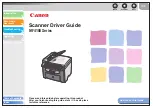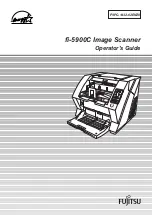
3
Film will be received from the public in various states of disrepair, with bad splices, winding turned over
on the reel, being mounted on the wrong type reel or the wrong way out, no leaders, etc. and a facility must be
provided for making the footage ready for transfer. This requires at the minimum a pair of film rewinds, with
adapters for regular-8 and super-8 reels, a supply of film leader and empty reels, a film splicer, and a way of
cleaning excess dirt off the film. Ideally there will be a light box for looking through the film, and a light above the
editing bench to reflect light off the film.
Refer to the first section of these instructions for a description of how the film should be wound on the
reel. There should be 3 feet of leader on the start for proper threading of the TVT, and enough leader on the end to
thread the film cleaning device. Torn film sprocket holes and crooked splices should be removed to prevent
transfer problems.
Small rolls should be spliced together for efficient transfer. A properly made cement splice, using fresh
cement, is preferred. The smoothest transit of splices occurs when you have made a beveled splice using an
(unfortunately discontinued) Agfa or Bolex splicer, where the total thickness at the splice is about the same as
unspliced film. (Fuji Single-8 and K-Mart Focal film was on polyester base and must be tape spliced.) When
making tape splices, ensure that the sprocket holes are not covered up and the tape is on straight, and on both sides
of the film.
We suggest using 400 foot (122 meter) reels, and cans or 7" size white 1/4" audio tape boxes. Usually if 7
small 50' rolls of regular-8 film, or 8 small 50' rolls of super-8 film, is wound on each reel, this will enable two of
the reels to fit on each 1 hour tape or disc with minimum waste and no need for time-consuming tape editing or
overlaps. Mark the leader on the head (beginning) of the reel with the customer’s name or job number, and the reel
number, to avoid mixups. Leader with a matte finish can be written on with pencil, while shiny leader can be
marked with a Sharpie or India ink. Ensure that that the cleaning step does not remove the reel identification.
Storage cans should be ventilated for slight air circulation, to prevent film deterioration from “vinegar syndrome.”
Advise the customer to keep his film in a cool, dry, dark place to prevent fungus growth. You want the film to be
in good condition so you can transfer it again when the next super generation of video equipment formats makes
the present transfer obsolete. :-)
After each reel is spliced and repaired, it is rewound through the film cleaner device on to the proper reel,
which restores the reel to being heads out instead of tails (foot or end) out, and sent to the transfer room. Note:
When using a liquid cleaner, view the rewinding film by reflected light to make sure it is dry again before it is
wound up, or else the film may dry with “shoreline” marks on it. You can wind quite fast if not using an excessive
amount of solvent.
Important note on lubrication:
Kodachrome films processed by Kodak usually cause no trouble. Some film types, or films developed by
cut-rate labs, are not lubricated in processing and can give an unsteady image and noisy running until lubricated as
described above. The cleaning fluid should have a small amount of wax dissolved in it to provide lubrication for
smooth transport through the TVT or through the customer’s projector. A suggested amount is a lump of candle
wax or beeswax the size of a pea ground up and dissolved in a pint (half litre) of solvent.
Cleaning solvents that are widely used include methyl chloroform (
toxic fumes
), perchloroethylene (dry
cleaning fluid) (
toxic fumes
), Freon TF (
ozone depleting
), or 99% isopropanol (isopropyl alcohol) (
flammable
).
There are also commercially mixed film cleaners with lubricant. Cleaning must take place in a ventilated area.
TVT Installation
For the USA version, plug into 115-120 volt AC (alternating current) at 50 or 60 Hz (Hertz, or cycles per
second.) 100 volt power (Japan) should still work but the maximum speed will be reduced. For the export version,
the unit will be wired for 230-240 volt AC 50 or 60 Hz.
Connect the USB 3.0 cable to the computer. The correct jack should be marked “USB3” or “SS” for
Super Speed.
Computer Requirements
You should have a modern computer with Intel dual-core processor i3 or better, running Windows XP,
Vista, 7 or 8 and with a factory original USB 3.0 jack. Also, 2 GB RAM, a Graphics card with 24 or 32 bits and
DirectX 9.0c or higher. The Linux operating system may also work with the Imaging Source software for that
operating system, but we have not tried it.
If you plan to do Uncompressed recording, you may need a RAID array to accept the huge resulting files.

























